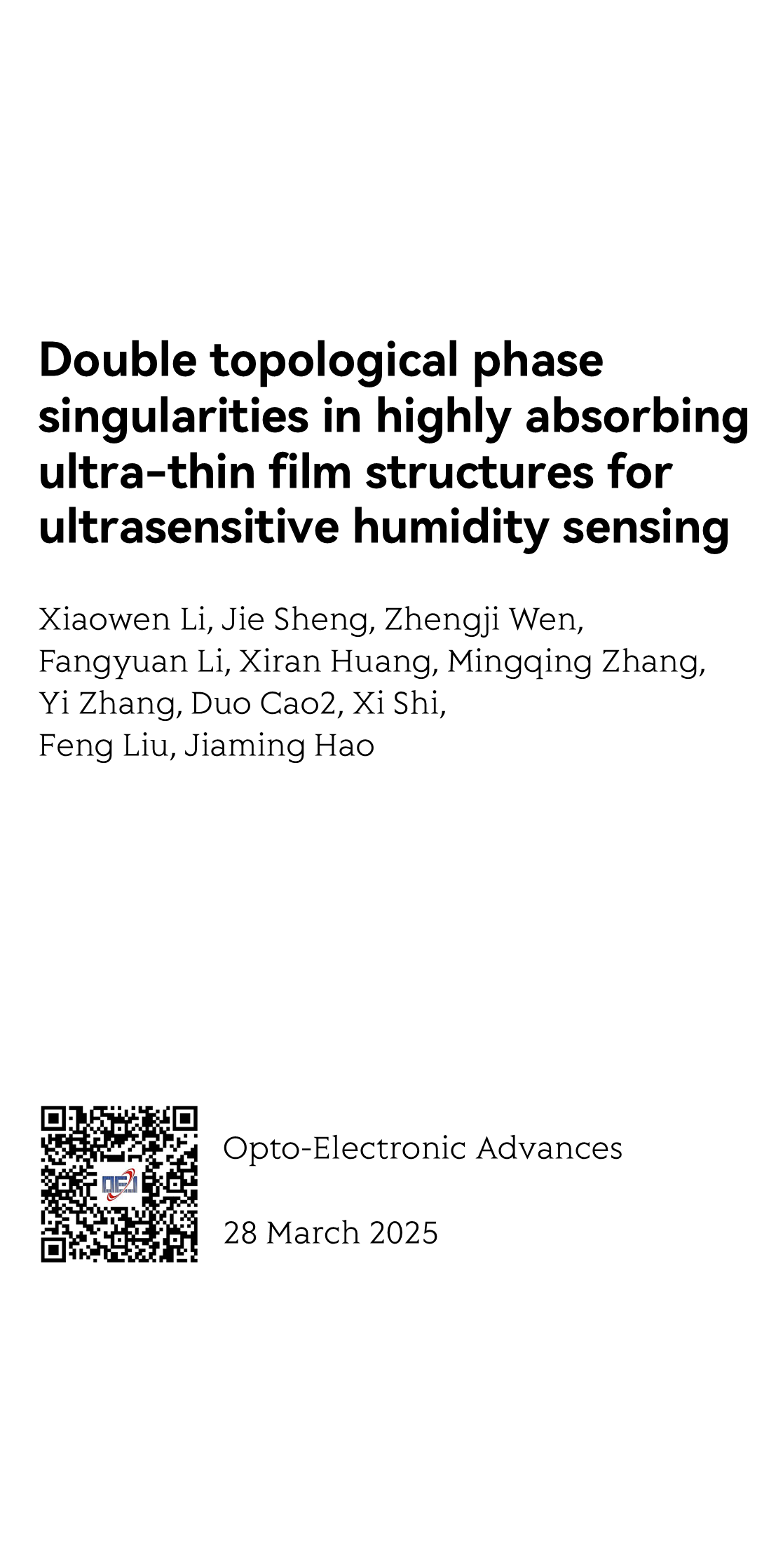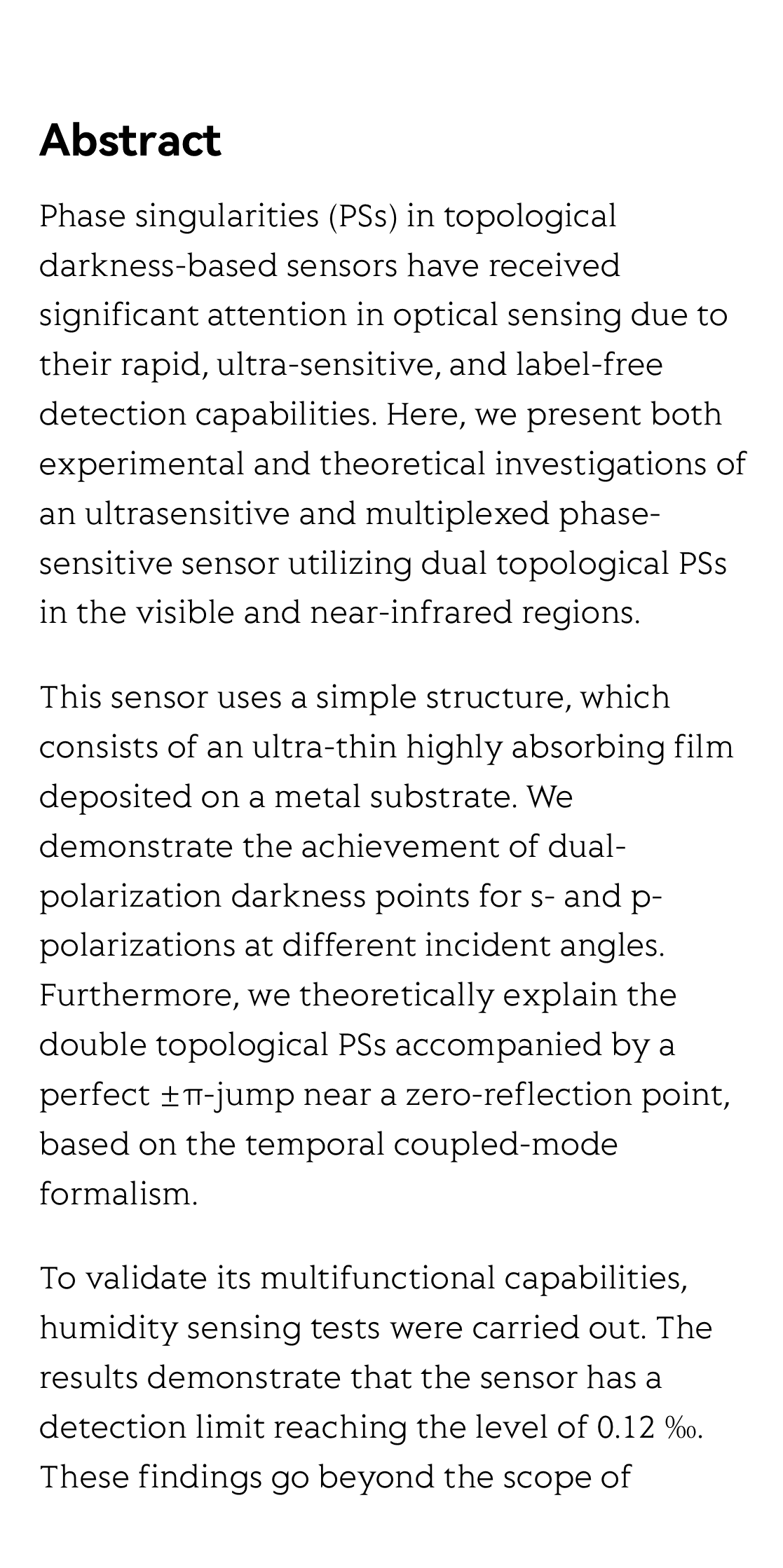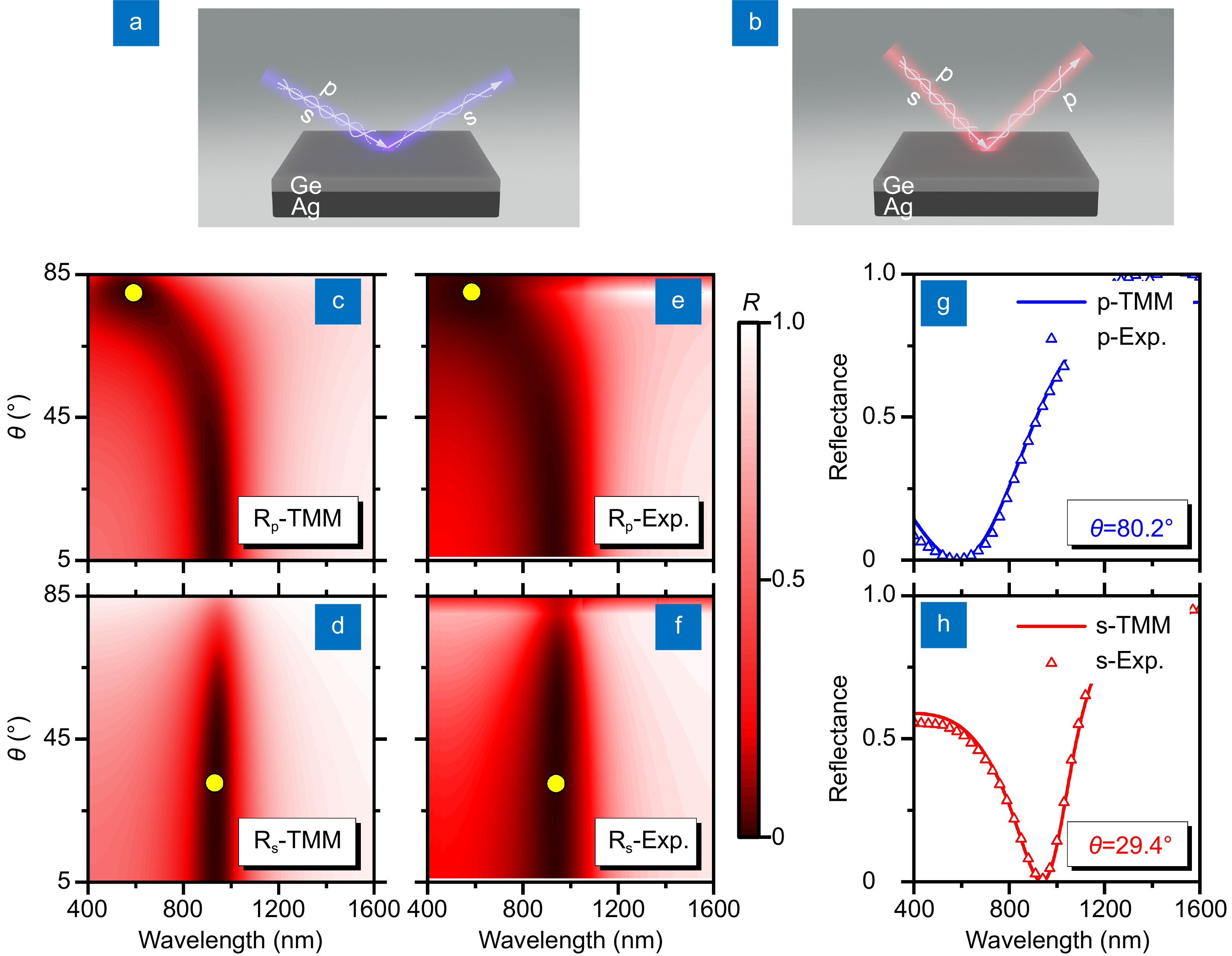(Peer-Reviewed) Double topological phase singularities in highly absorbing ultra-thin film structures for ultrasensitive humidity sensing
Xiaowen Li 李晓温 ¹ ², Jie Sheng 盛洁 ², Zhengji Wen 文政绩 ³, Fangyuan Li 李方园 ², Xiran Huang 黄熙然 ², Mingqing Zhang 张名青 ¹, Yi Zhang 张毅 ², Duo Cao 曹铎 ², Xi Shi 石溪 ², Feng Liu 刘锋 ², Jiaming Hao 郝加明 ¹
¹ Institute of Optoelectronics & Department of Materials Science, Shanghai Frontiers Science Research Base of Intelligent Optoelectronics and Perception, Fudan University, Shanghai 200433, China
中国 上海 复旦大学 光电研究院 材料科学系 上海市智能光电与感知前沿科学研究基地
² Department of Physics, Shanghai Normal University, Shanghai 200234, China
中国 上海 上海师范大学物理系
³ State Key Laboratory of Infrared Physics, Shanghai Institute of Technical Physics, Chinese Academy of Sciences, Shanghai 200083, China
中国 上海 中国科学院上海技术物理研究所 红外物理国家重点实验室
Opto-Electronic Advances, 2025-03-28
Abstract
Phase singularities (PSs) in topological darkness-based sensors have received significant attention in optical sensing due to their rapid, ultra-sensitive, and label-free detection capabilities. Here, we present both experimental and theoretical investigations of an ultrasensitive and multiplexed phase-sensitive sensor utilizing dual topological PSs in the visible and near-infrared regions.
This sensor uses a simple structure, which consists of an ultra-thin highly absorbing film deposited on a metal substrate. We demonstrate the achievement of dual-polarization darkness points for s- and p-polarizations at different incident angles. Furthermore, we theoretically explain the double topological PSs accompanied by a perfect ±π-jump near a zero-reflection point, based on the temporal coupled-mode formalism.
To validate its multifunctional capabilities, humidity sensing tests were carried out. The results demonstrate that the sensor has a detection limit reaching the level of 0.12 ‰. These findings go beyond the scope of conventional interference optical coatings and highlight the potential applications of this technology in gas sensing and biosensing domains.
Flicker minimization in power-saving displays enabled by measurement of difference in flexoelectric coefficients and displacement-current in positive dielectric anisotropy liquid crystals
Junho Jung, HaYoung Jung, GyuRi Choi, HanByeol Park, Sun-Mi Park, Ki-Sun Kwon, Heui-Seok Jin, Dong-Jin Lee, Hoon Jeong, JeongKi Park, Byeong Koo Kim, Seung Hee Lee, MinSu Kim
Opto-Electronic Advances
2025-09-25
Dual-frequency angular-multiplexed fringe projection profilometry with deep learning: breaking hardware limits for ultra-high-speed 3D imaging
Wenwu Chen, Yifan Liu, Shijie Feng, Wei Yin, Jiaming Qian, Yixuan Li, Hang Zhang, Maciej Trusiak, Malgorzata Kujawinska, Qian Chen, Chao Zuo
Opto-Electronic Advances
2025-09-25







